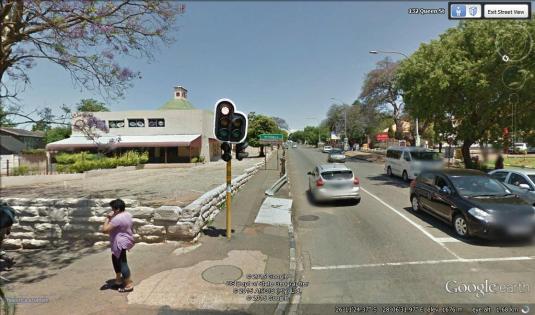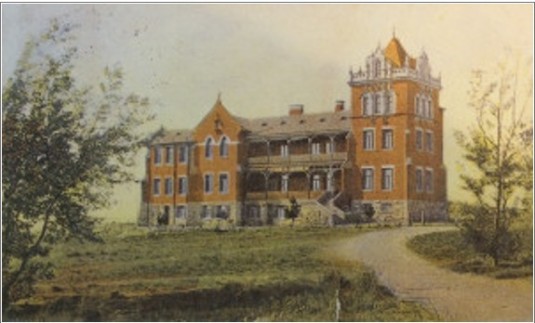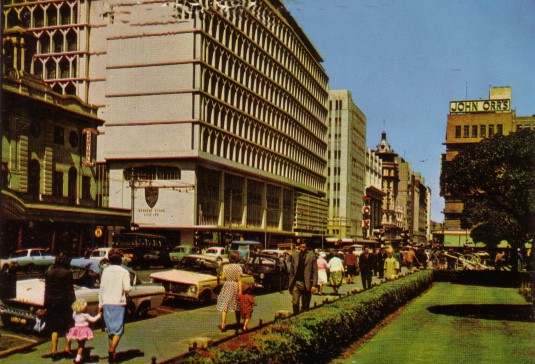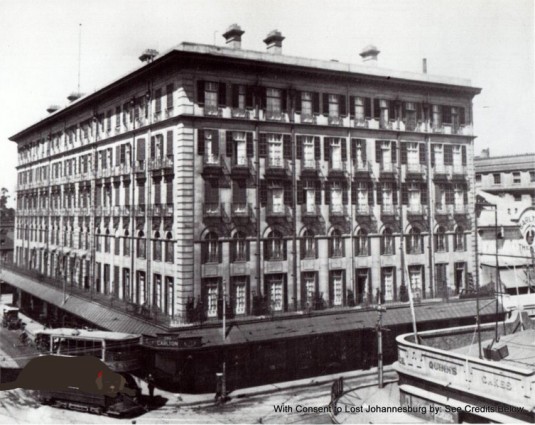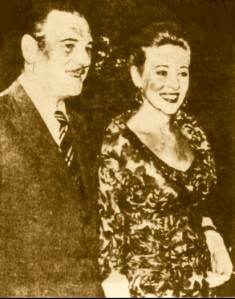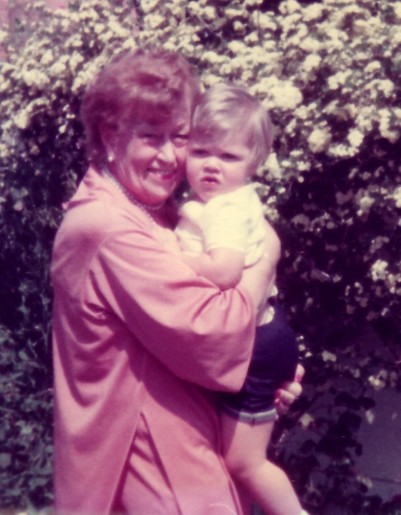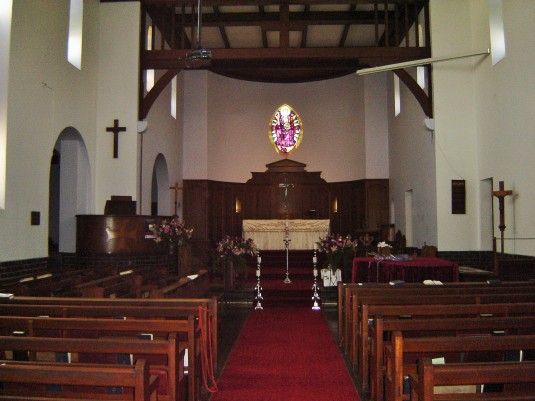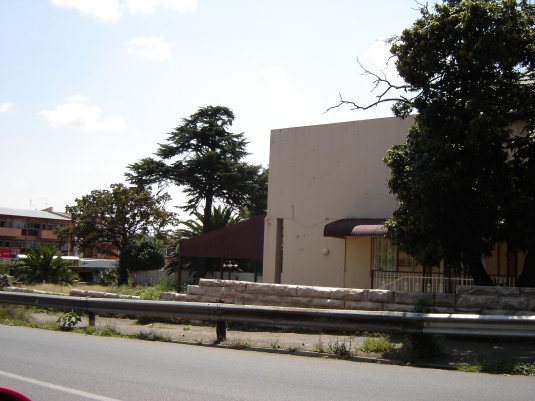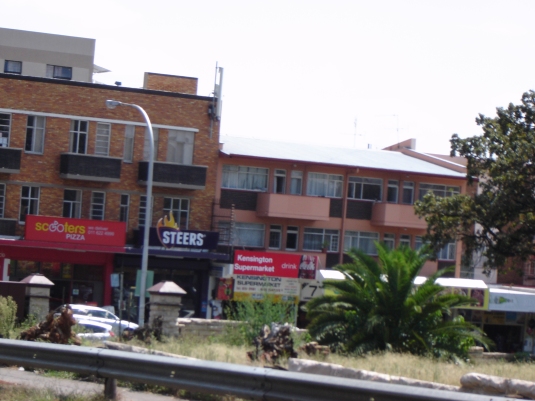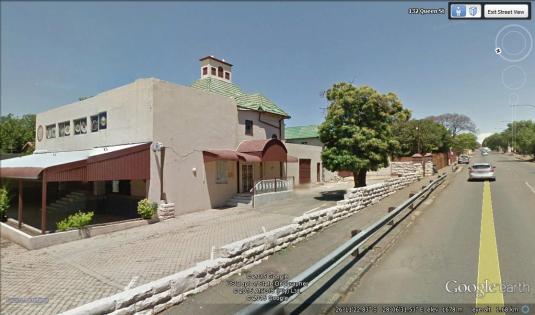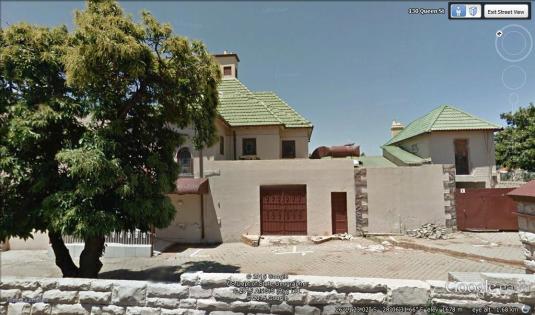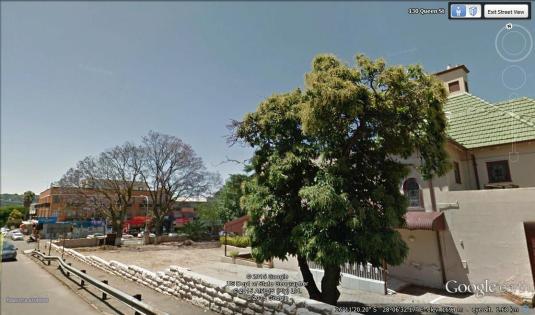I was very pleased to hear from Margaret Nel van Heerden, the daughter of the late Mr A.S. Nel, headmaster at the Hendrik Van der Bijl Primary School in Vanderbijlpark in the 1950s. Margaret is a distinguished visual artist and lives in Pretoria. Her article about the school reads as follows:
Margaret Nel – aged 8.
I read your article Vanderbijl Park: Early Fifties with a great deal of interest. I am Margaret Nel, daughter of the first principal of Hendrik van der Bijl Primary School, Mr AS Nel, not a Hollander or “Dutchman” but a highly qualified South African (BA, MA, BEd, MEd, BCom, BEcon), very well regarded by both the staff, parents and pupils of the school. Both he and my mother came from conservative Nationalist Afrikaner farming families. Both were fully bilingual as am I.
My parents had spent some time in the UK a few years before World War Two. My father was an exchange teacher in London and was sent at short notice to different schools, mostly in very poor areas, when one of the teachers was absent for some reason. This experience gave him a better understanding of the backgrounds of his pupils whose parents left after the war and settled in South Africa hoping for a better future for their children. He always believed that any child, no matter what his culture,background, or creed could make a success of his/her life if given a fair chance.
I attended the Hendrik Van der Bijl School from 1951 to 1957. My mother, whose name was also Margaret, was my Grade 1 teacher before she went to Oliver Lodge Primary School and later to Vaal High School. The headmaster at the Vaal High was Mr Thomas whose two daughters, Brenda and Sally, attended Hendrik van der Bijl School during the same period.
I am also left handed but my mother’s attitude was that I lived in a right handed world and taught me to sew, knit, crochet and cut with a pair of scissors with my right hand. I write with my left hand however and remember left handed children in the school class being made to sit next to each other at a desk to prevent accidentally bumping the hand doing the writing.
My father was a keen sportsman who coached school cricket, rugby and athletics in addition to his duties as head master.
The names of many of the children mentioned in your articles are familiar to me. Bridget (Biddy) Lawrence was the younger daughter of my family’s GP who lived for some time opposite the headmaster’s house, which was located almost next to the school. One of my best friends was Stephanie (Steffie) Daniel, younger sister of Joy. Other children who were in your Standard 3 class and whose names you may recognize are Kathleen Richardson, Geraldine Black, twins Walter and Jackie McGuicken, Darryl Pile, older brother of my best friend Jennifer Pile, Michael Beisly, who died of leukemia in 1956, Merle Aronstam, whose family owned the local hotel and Jennifer Forbes.

English and Afrikaans staff at Hendrik Van der Bijl School (1952)
The end of year concerts that you mention were enormous fun even though at primary school level no auditions were really considered necessary. Mothers and teachers made the costumes while my father, who painted (rather badly, as he had no training) as a hobby, supervised the construction of the sets. The Standard 5 teacher Frances Bird, usually wrote the script if it was an English play, often a version of a fairy tale such as Sleeping Beauty or Cinderella. Every year we would go to Johannesburg to a shop called Carnival Novelties to buy stage makeup and false hair for the wigs and beards. Needless to say, as the headmaster’s daughter, I only ever had a very small part and was never selected for a leading role as that would have been considered favouritism. After the final evening performance, all the staff members who were involved with the concert gathered at our house for refreshments while the children of the teachers played Blind Man’s Buff in the dark on my double bunk bed.
His Majesty’s Theatre, Commissioner Street.
We often visited Johannesburg as it was the only place where we could access book shops and go to the theatre. Ballet performances were always held at His Majesty’s Theatre, with the corps de ballet selected from local dancers while principals were always imported from Sadlers Wells. The library had a small theatre below ground level where Children’s Theatre productions were performed. A visit to Joubert Park and the National Art Museum near Park Station were always included on our visits. We didn’t have a car so traveled to Jo’burg in the red railway buses and stayed at the Victoria Hotel for the weekend. We often went to the East AfricanPavilion for curry or to the wonderful restaurant within Park Station where one could also see the massive Pierneef paintings.
Standard 2 class (1952)

I have all the photographs of the school buildings and of the primary school class included in your articles. As a year end gift for my father, his staff compiled a photograph album of all the classes, both English and Afrikaans of that particular year, as well as photographs and programs of the concert which was held every year at the Iscor Recreation Centre quite close to the school, and also of school sporting events. These albums, seven in total, dating from 1951 to 1957, with every child’s name inscribed under the class photograph, are very precious to me, as they are the only record of a very special period of my life. Many of the teachers, including Joyce McFadyen, whose daughter Dawn was one of my friends, Mrs Hicks, whose two children Muriel (who was in your class) and Edwin also attended the school, Mrs Erasmus, my Standard 3 teacher, and Irmgard Verhoop, the sewing teacher, who was German and whose husband Daan was Dutch, were all family friends as well as colleagues of my parents. The Verhoops were good people, their daughter Mareliese and I great friends although she was a year younger. Mrs Verhoop studied in Germany before the war and a great treat for us was when she took out all her beautifully sewn and embroidered handwork which she had completed for her exams.
Some members of staff off-duty!
Because we lived in a government house next to the school I was friends with children from various cultures living in the neighborhood, from very very poor Afrikaans children who were originally part of farming communities and whose parents couldn’t afford school clothes, to immigrant children, and children who lived in more affluent suburbs, albeit many of these in very modest homes. Almost all their fathers were connected to Iscor in some way, either at management or blue collar level. My earliest friends were Afrikaans children who lived in small pre-war houses in the same street, while also being taken by my parents to visit the luxurious riverside home of Mrs Erasmus, the Standard 3 teacher whose husband was a manager at Iscor.
My parents were acutely aware of possible family problems affecting the immigrant children whose fathers were employed by Iscor and Vecor and who came from the UK, from war-torn Europe, and Hungarians after the occupation of Hungary by Russia in 1956. There was no effective social network for these people to make up for their absent family members and friends.
The Nationalist Party came to power in the 1948 general election and decided to do away with parallel or dual medium schools. My parents together with the proactive Parent-Teacher Association were appalled by this retrogressive move and in 1956/57 decided to take the State to court in an attempt to retain the status quo of the school so that children would continue to be educated in the language of their parents’ choice while both language groups remained free to play together at break and practise sport together on the sports fields. The State lost the court case and there was much jubilation amongst many parents and teachers. The staunch Nationalists were extremely unhappy with this outcome so the State appealed the case in 1957. This time the verdict went in favour of the State and against the School. It was a sad day for everyone connected with the school, especially for my own family, as my parents were much loved and respected by the community. My father was forced to resign his post and we moved to Swaziland where he took up the post of headmaster at the Evelyn Baring High School. From 1958 the Hendrik Van der Bijl school became a single medium Afrikaans school with the vice headmaster, Mr Schroeder becoming headmaster of the school in my father’s place. When my mother died just over three years later, my father and I returned to the Transvaal, where he taught Mathematics at a Pretoria high school and later at Jeppe Boys High, where Haldane Hofmeyer was headmaster.
Because of my parents’ public opposition to the policies of the Nationalist Party I was given a place at the then politically progressive girls’ high school in Johannesburg, Kingsmead College. The daughters of the political activist Braam Fischer, and Helen Suzman’s nieces attended Kingsmead, as did Nadine Gordimer’s daughters some years later. My father was amongst the few brave people during the era of Grand Apartheid who stood up for what he believed in despite possible dire consequences. Most people simply went along with the system essentially knowing that it was wrong.
Later, as a mark of protest towards the government of the day, we spoke only English at home and all my friends were English speaking children from the neighborhood as well as from the suburbs nearer the Vaal river. Having such a wide circle of friends was beneficial to me for I have an understanding and empathy for people from different backgrounds and can easily accommodate myself when meeting people from areas as divergent as Houghton and Saxonwold to Pretoria West and Capital Park.
I have visited the school twice, the last time with my daughter about eight or ten years ago. The area is still essentially a poor white area, but the school, which became a prosperous Afrikaans-only institution and acquired a state funded school hall, administration block and swimming pool after we left, is now again, ironically, a dual medium school. This time it caters for a minority of white Afrikaans speaking pupils remaining whose parents wanted them to complete their schooling there before going to high school, and the majority of black pupils who were taught in English despite their native vernacular being a black language such as Sesutu. Sadly the buildings and grounds had deteriorated badly, the swimming pool unused and empty. I suspect that it now enrolls only black pupils.
My father fought for equality and friendship amongst the two predominant white cultures. Never in his wildest imagination could he have foreseen the path the school would follow after he left.
Margaret Nel van Heerden
Read more about appeal at:Hendrik Van der Bijl School appeal
Resolution of the committee of Hendrik Van der Bijl School
www.margaretnel.com and www.art.co.za/margaretnel





















